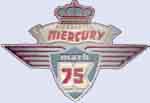
Originally Posted by
Fastjeff57

Saw an article on this in Popular Mechanics in which they supercharged a SB Chevy with two gas powered leaf blowers. Motor made great power and, thinking of outboards, it gave me an idea: How about one leaf blower (possibly battery powered) supercharging an OB?
Here’s how it could be done:
Method One: The blower pressurizes an air box with the carb(s) inside. This arrangement requires a way to boost the fuel pressure in the carb(s) or they will lean out as the boost comes up. Also, the throttle linkage has to go through the air box (to the outside) without binding or creating an air leak. Advantages of this method are easy starting and ‘normal’ throttle up.
Method Two: The only carb (a big one!) is mounted on the leaf blower. Advantages of this arrangement are automatically correct fuel/ air ratio (within limits), and no need for fuel pressure boosting. Disadvantages would be rotten throttle response without the leaf blower running, and the need for a pump spray system to get the motor started.
Interesting?
Jeff


 Thanks:
Thanks:  Likes:
Likes: 


 Reply With Quote
Reply With Quote


Bookmarks